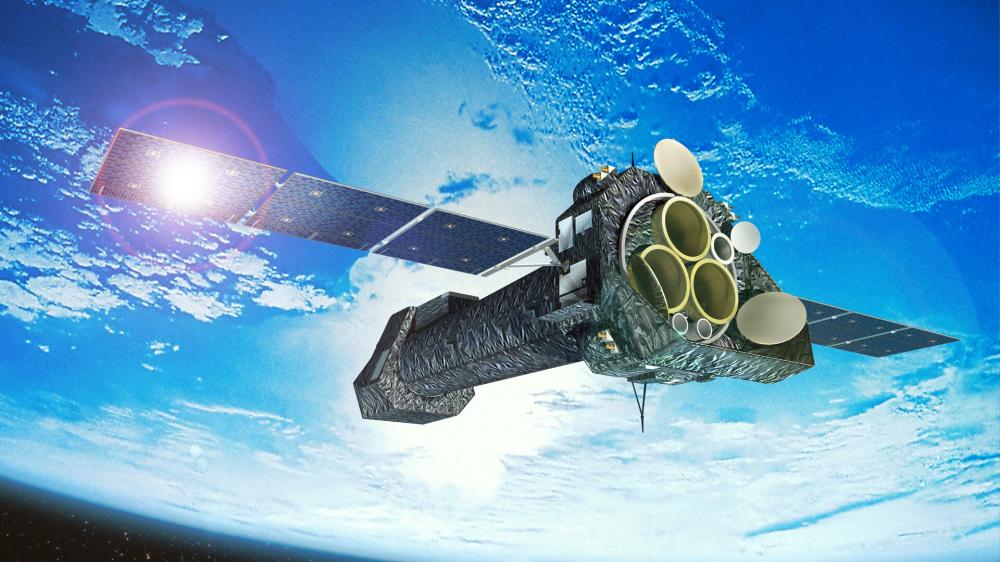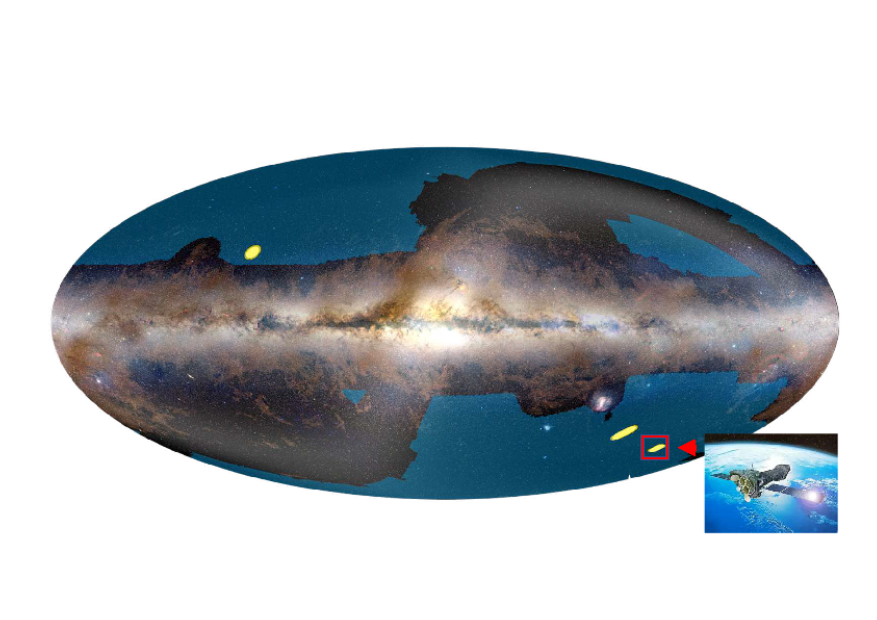
Artist's impression of ESA's XMM-Newton space telescope, the flagship of European X-ray astronomy. Credit: ESA
XMM-Newton's energetic universe joins forces with the Euclid satellite's vision of the sky. A thousand hours of X-ray observations, over a region 40 times the size of the moon, will complement multi-wavelength studies of the cosmic evolution of galaxy clusters. A decisive association to constrain cosmological scenarios and reveal the nature of dark energy.
The great astronomical surveys from the sky
Over two decades, large multi-wavelength surveys of the sky have become a key component of today's major observatories, whether from ground-based or space-based platforms.
Launched in 1999 by ESA, XMM-Newton was primarily designed for detailed study of astrophysical X-ray emissions. With its field of view (30', equivalent to the apparent size of the moon), good image quality, and large collecting area, it has emerged as the ideal instrument for mapping the sky between 1 and 100 Å. At these energies around the keV range, two main types of objects are predominantly found at high galactic latitudes: active galactic nuclei (point sources) and galaxy clusters (extended sources), which notably trace the history of the universe's structure formation.
ESA's Euclid satellite, successfully launched on July 1, 2023, will conduct a deep mapping of the extragalactic sky in the visible and infrared domains. The "Wide" survey will catalog several hundred thousand clusters distributed over the last 10 billion years of the Universe's history. "Deep" observations, 50 times deeper, will focus on three specific regions of the sky to take advantage of Euclid's exceptional image quality to probe even more distant epochs. One of them, named EDFF (Euclid Deep Fields Fornax), spans 10 deg2 in the Fornax constellation (the Furnace).
A multi-wavelength view of the universe in search of dark energy
The largest observatories (ESO, Keck, Subaru, Spitzer, MeerKAT, etc.) have already planned a portion of their resources to cover EDFF in imaging (optical, infrared, radio) and spectroscopy to complement the Euclid mission in the search for dark matter.
In December 2023, following the triennial XMM "Heritage" call, 1000 hours were allocated to carry out the X-ray counterpart of the EDFF field. This also constitutes the largest XMM program conducted since its launch. This view of the energy universe, combined with Euclid and multi-wavelength data, will provide an independent and complementary perspective on the physical phenomena responsible for the evolution of galaxy clusters and the activity of active galactic nuclei. The XMM observations will take place over 3 years from May 2024 to April 2027.
Galaxy clusters observed by Euclid and XMM exhibit two different signatures: in optical, it is the one of the stellar populations of cluster galaxies, while in X-rays it is the emission from the ionized plasma, reaching temperatures of several tens of millions of degrees, filling the space between cluster galaxies. The joint statistical analysis of the two surveys will allow unambiguous modeling of the population of clusters in the Deep EDFF not detected in the Wide survey and reconstructing cluster counts as a function of their mass and time. These counts will be crucial for constraining cosmological scenarios and revealing the nature of dark energy.
Around twenty European and Japanese researchers contributed to the development of the Heritage XMM Fornax project, including five from French institutes: CEA (IRFU), the Observatoire de la Côte d'Azur, and the Institut d'Astrophysique de Paris.
The entirety of the XMM Fornax observations and associated multi-wavelength data will form a "photon treasure trove" of unparalleled richness for the approximately 2500 members of the Euclid community.
Contact: Maguerite Pierre
• Structure and evolution of the Universe › Evolution of the large structures and galaxies
• Department of Astrophysics (DAp) // UMR AIM




